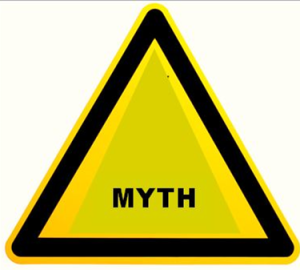— August 29, 2017

Alexas_Fotos / Pixabay
If you’re like most every other modern professional, you want a virtual executive assistant who knows your needs, reads your mind, sees workflow issues before you do, and is proactive on your behalf.
On the other hand, like everyone else, you don’t want to take the time to train a virtual executive assistant to create this mind meld nirvana.
Therein lies the ultimate management conundrum: Do I spend time investing some of my valuable time today so that I can save time tomorrow?
The answer should be a definitive “yes!” But, few people actually have the confidence that they will be successful making this investment. The human psychology of instant gratification conspires against them. They never slow down so that they can later speed up. Therefore, they remain on the self-admin treadmill…
This is incredible when you think about how just a bit of annual, monthly, weekly, and daily planning will set you apart from the masses. Time spent proactively will automatically put you in the top 1% of humanity in terms of being an effective person, and it is actually quite easy to achieve!
Below, I give you a quick-and-easy 3 step guide to getting up and running with a virtual executive assistant as your inevitable time manager.
Want to be successful working with virtual assistants? Follow this 3 step guide and you’ll be the envy of most everyone else’s unmet yearning for increased productivity.
1. Choose a role
An assistant is too vague. Just like you, your assistant won’t be able to do everything. You play many rolls: You may be a friend, a spouse, a sales manager, a CEO, an accountant, a parent, a for-profit board member, a non-profit board member, a volunteer at your church. You are almost certainly more than one of these. Your assistant won’t be able to support you across all roles on day one, so pick a single role.
Pick one of your professional identities. Then, choose the persona that matches. If you choose sales manager, think of your assistant as a sales assistant. If you are a CEO, think of your assistant as a time manager. You may be both a CEO and a sales manager, because your company still requires you to wear both hats.
But choose one hat to start.
2. Define the role
Let’s say you’ve selected CEO as your persona and time manager as your assistant-to-be persona. Now define it. What exactly will your virtual executive assistant actually do? You’ll feel overwhelmed when you initially ask yourself this question. That’s because you’ll initially feel like there are at once too many things and almost nothing that can be delegated.
So, think about process. Identify, three key processes that your assistant can drive for you. Write them down so that it looks something like this:
My time manager will:
- Keep my task list organized, and remind me and others when key tasks are coming due. My assistant will review my task list with me via screen share each morning to confirm that we are assigning the right level of priorities to each task, reminding key people of task dependencies. During this daily sync, my virtual executive assistant will confirm which tasks or subtasks she can and will handle on my behalf.
- Protect my time for performing my key work and/or tasks. Managing time will be centered on both ask management and managing my calendar. I will copy my assistant on scheduling emails so that she can, thereafter, manage the email ping-pong required to make sure a meeting takes place. She will ensure that I have adequate buffer time between meetings, that travel times are accounted for, and that reservations are secured and meetings are confirmed in advance. She will take phone calls, and answer or block emails for me during times that I need to focus. When I’m writing, for example, she will block my calendar and make sure that nothing is scheduled during that time unless it is for a key VIP contact, client, or colleague. She will confirm these block-out times during our weekly syncs. And she will remember to come to these weekly syncs with questions related to broad tasks, projects, and calendars.
- Select the key tools. It is key that this is the final step and not the other way around. Often, people hire a virtual assistant to manage their CRM, handle email, and/or drive their marketing automation tool. In other words, they select and secure the tool before they define the process and hire a virtual assistant to drive that process. This is backwards.
3. Choose the Tools
All such tools drive activity within key personas. Hiring an assistant to drive a tool is analogous to having the tail wag the dog. If, when thinking about what your assistant might do, you first think about tool management then that tool is probably getting in the way. And it is probably getting in the way, because you have not clearly defined the process around which the tool is to help you. People make this mistake all the time. They buy a CRM solution in hopes that it will enable them to define their sales process. They buy a marketing automation tool in hopes that it will teach them how to market. That’s backwards. The best time to buy a CRM solution is just after you have clearly defined and proven out your sales process, and just after you have hired your sales assistant or first sales rep.
For task management: Asana. There are tons of other good tools. We also like producteev, smartsheet, and many others. But Asana has a great ecosystem, and we’ve already had many clients use it. You can configure it to manage tasks according to classic time management systems like Franklin Covey or Getting Things Done® (GTD®). It is a great tool for acting like your team brain between your assistant and members of your team to:
- Remember different projects with due dates and priority headings to log and track next steps
- Hold every note your team needs to act on these next steps
- Key emails can be sent straight to the project on Asana so that they don’t clog your email box
- The tool has integrations with Dropbox, Google Drive and others
For distributed team storage: BOX
- It is inexpensive, but independent from your email and computer software
- Has good team admin tools
- Strong security and auditing
CONCLUSION
I hope the above quick-and-easy 3 step guide will get you up and running with a virtual executive assistant as your inevitable time manager.
Business & Finance Articles on Business 2 Community
(75)
Report Post







